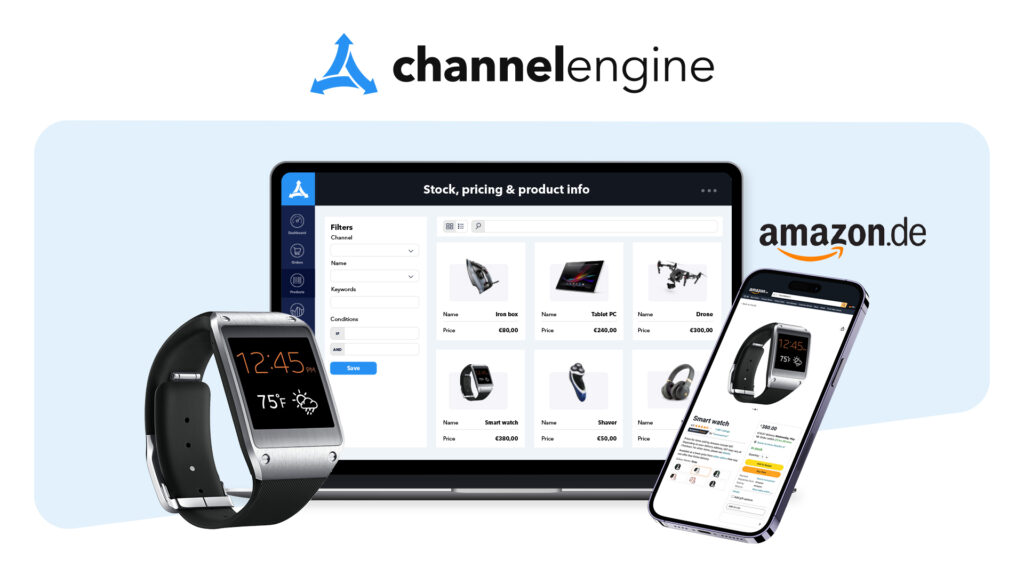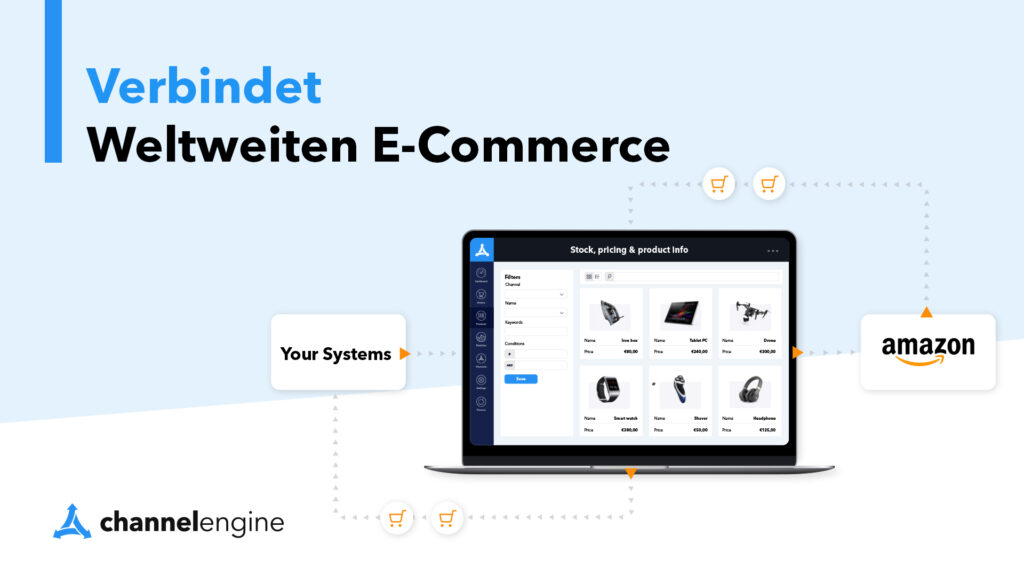Electronics retailers today have the tough job of responding to customer demands, while balancing their need to reduce costs and rationalize physical retail spaces. It’s not easy – and for the past few years, retailers of consumer electronics have already had a bumpy ride.
For many, the greatest task has been adapting to the presence of Amazon as a dominating market force. Amazon isn’t ‘just another competitor’ in a crowded market; the ecommerce giant is at heart a technology company that has brought powerful changes and improvements to online retail by leveraging innovation relentlessly.

As an extra challenge, consumer habits are rapidly shifting too. These changes are driven by a greater awareness of sustainability, and new habits brought on by the recent COVID pandemic. How can electronics retailers respond to this market, and turn a challenge into an opportunity?
The transformative force of Amazon

With a laser-sharp focus on customer experiences and a disruptive approach to ecommerce, Amazon has transformed the German consumer electronics retail industry. The company is now the #1 source for consumer electronics in the country: 72% of electronics consumers use the website to quench their thirst for gadgets, and 97% of consumers are familiar with the brand.
Consumers are drawn to its wide selection of products, competitive pricing, and fast delivery. By leveraging these features in combination with innovative technologies, Amazon has quickly become the dominant player in the German market. In fact, they were Germany’s most trusted online brand in 2022.
Another factor in Amazon’s success has been an excellent understanding of consumer priorities. The company realizes that consumers care deeply about sustainability and environmental issues, and have responded by offering a ‘Climate Pledge Friendly’ label and third-party certifications, which have high relevance for the German market.
Electronics retailers must learn from Amazon’s successes and adapt. By understanding the fundamental drivers behind this rapidly shifting market, they can grasp the shape of the future, and plan for it.
How Amazon became a powerful force in ecommerce
When Amazon first entered the German market in 1998, no one could have predicted the changes it would bring with it. By 2013, the company started to gain traction among consumers as a convenient source for electronics (and many other products too).
A big part of Amazon’s success has been a business model that prioritizes convenience, selection, and competitive pricing. This customer-centric approach has challenged traditional retailers to adapt their own business models to keep up – and the customer has benefitted. Thanks to this, Amazon now occupies the top position in this market, with MediaMarktSaturn, Apple, Otto, Expert, and Conrad still trailing behind.
How the market has adapted
Recognizing the new market reality, electronics retailers have already made big changes. Some attempted to compete directly; by optimizing their online presence, offering competitive pricing, and focusing on better customer experiences, while others sought to differentiate themselves with unique omnichannel services and other offers.
However, many retailers found it hard to rally the same resources as Amazon. By leveraging its size and scale, Amazon has retained a leading edge. It can lure customers by offering a wider selection of products, more competitive pricing, and fast delivery options. These features make Amazon a popular choice for consumers looking for a convenient and cost-effective shopping experience.
Central to all of this is Amazon’s keen grasp of the customer experience (CX), and how critical it is to its ecommerce success.
The critical role of CX and how Amazon masters it
Customer experience (CX) is vital for success in retail, even more so in ecommerce. Amazon has mastered this by making CX a core part of its business strategy from the start. They have focused heavily on certain key areas:
Speed
Amazon’s customers know they can always get fast and reliable delivery options, making it easy for them to receive their purchases quickly.
Selection
Combined with its many marketplace sellers, Amazon offers an incredibly wide selection of products. This makes it much more likely customers will find the right product.
Customer service
This is often a significant burden for retailers, but Amazon leverages technology to automate large parts of customer service, and ensure quick resolution when issues occur.
Customer insights
Amazon has become a CX master by using data and analytics. The company actively collects and analyzes data about customer behavior, preferences, and buyer feedback. It uses this data to improve its products, services, and overall customer experience.
One example is the way Amazon’s recommendation engine uses customer-specific and trend data to suggest products that are most likely to appeal to each individual customer.
Convenience
Another key feature is the ‘Buy Box,’ which gives potential customers a recommended choice for a particular product, based on data such as the lowest price and the highest feedback ratings. The Buy Box is a convenient tool for buyers who are guided to the ‘best purchase’ with minimal effort. For marketplace sellers, of course, winning the Buy Box is a considerable advantage.
When it comes to customer experience, Amazon has set a high bar. However, achieving this level of CX requires multiple technologies.
Technologies and trends shaping the future of the consumer electronics market
Perhaps the single most significant CX technology today is artificial intelligence (AI). AI is used by Amazon to improve product recommendations and personalize shopping experiences. Advanced algorithms can comb through vast amounts of data to recommend items and predict complementary purchases. They can also identify internal process optimizations that indirectly improve the customer experience, by reducing shipping times or costs.
Amazon also invests heavily in automation technology, such as robotics and drones, to streamline its supply chain and improve delivery times. As well as grabbing headlines, investing in these technologies is putting Amazon far ahead of the competition.
Another area where Amazon is winning the technology arms-race is in smart assistants and voice shopping. By integrating their own smart speakers with the Alexa voice assistant, the company has created a unique way for their customers to shop even more conveniently.
Each year, Amazon continues to improve its business model and strengthen its position. As these technologies continue to evolve, Amazon is likely to remain a dominant player in the industry, driving innovation and setting new standards for customer experience and satisfaction.
This puts consumer electronics retailers in a difficult position: should they race to compete with these technological advances, or is there another way to stay relevant in this changing market?
Adapting to the future of consumer electronics retail
The transformative role Amazon has played in the consumer electronics retail industry provides important lessons for retailers looking to adapt to a rapidly evolving market. First, they must focus on realizing the best customer experience by leveraging new technologies and continuously innovating.
Investing in new technologies such as AI, automation, and data analytics, can help retailers optimize their supply chain operations and improve pricing strategies, allowing them to remain competitive. However, these may be out of reach for many retailers who are not yet adept in these capabilities, or lack the capital to develop them independently.
In these situations, it’s smart to leverage Amazon’s own winning CX to your benefit. As they say, ‘if you can’t beat them, join them.’
Retailers that want to maximize their Amazon marketplace success should pay attention to the following steps, to ensure their continued relevance in this dynamic market:
- Understand your products‘ and business‘ USPs thoroughly. Research the competition and understand how your offer can stand out.
- Try to meet the standards for Amazon’s A+ content: highlight your USPs and product reviews, be precise and concise, and proofread thoroughly to avoid content errors. Use high-quality product images that showcase your products in the best possible light, from every angle. Having A+ content will help your listings rank higher.
- Create high-quality search engine optimized (SEO) product listing titles that accurately describe what people are looking for.
- Offer competitive pricing and use dynamic pricing tools to adjust prices based on demand.
- Monitor and respond to customer feedback, addressing any issues promptly to maintain a high seller rating.
- Use Amazon’s Fulfillment by Amazon (FBA) service to streamline shipping and customer service.
- Leverage Amazon’s advertising tools, such as sponsored product ads and display ads, to increase visibility and drive sales.
- Use Amazon’s data analytics tools to gain insights into customer behavior and optimize product offerings.
- Ensure that your products are eligible for Amazon Prime and other loyalty programs to attract loyal customers.
- Evaluate and improve your product offerings and customer experience frequently to maintain a competitive edge in the marketplace.
Retailers can learn a lot from Amazon’s approach to innovation: it’s worth experimenting with new business models and product offerings, and continuously evolving to meet changing customer preferences. We also recommend an active advertising campaign, to ensure your brand retains a distinct identity in a competitive marketplace. By leveraging advertising effectively, you can drive customers to your own website, or your own listings on Amazon by encouraging more customers to search for your brand first.
Using automation can also reduce your cost structure, while data can help you guide the implementation of new technologies with greater precision and efficiency. Adopting a flexible approach that leverages AI and algorithms will help retailers better position themselves for success in a rapidly changing market.

Keine Amazon News verpassen – mit dem kostenlosen Newsletter!

Katharina Caracciolo
Fragen, Feedback oder auf der Suche nach einem starken Partner?
kontakt@movesell.de / +49 431 128 2222 9
Schon gewusst? Wir sind eine führende Amazon-Beratung für alle EU-Marktplätze, Entwickler des Analyse-Tools ROPT und exklusiver Amazon Ads Agency Partner.

Henry Krause






